Toad cactus, anyone?
Toad cactus, starfish cactus, star flower, leopard print flower.
It always amazes me how many common names a plant can have, especially one that is anything but common in our part of the world. Let’s not forget the catchall moniker “carrion flower,” which seems to be used for scores of plants, many of them not even related.
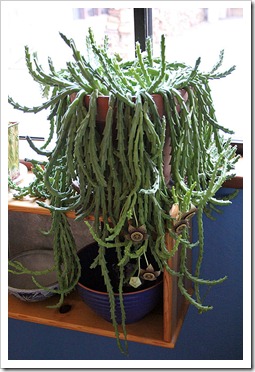 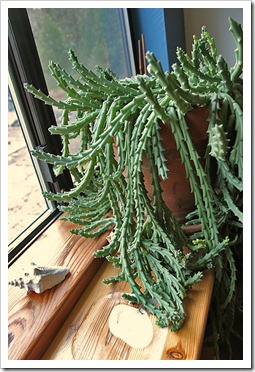 |
| Toad cactus (Orbea variegata) |
The plant I’m talking about—and which I will call “toad cactus” even though it’s not a cactus—is found in the Western Cape province of South Africa. (Lately it seems that virtually all the intriguing plants I come across are from South Africa.) Its Latin name is Orbea variegata; in the past, it was included in the genus Stapelia, and looking at the leaves and flowers, it’s easy to see why. For comparison, check out the photos of Stapelia gigantea I included in this recent post.
Like all stapelias, the toad cactus has long leafless stems that look like green rope. In the ground, it forms attractive mats. In cultivation, it looks best in a hanging pot where the stems can dangle freely.
As nice as Orbea variegata looks year round, its flowers are particularly stunning. The stapeliads are often called the “orchids of the succulent world,” with good reason. Their flowers are complex and intricately patterned and, to my eyes, very attractive. Their somewhat unpleasant scent—designed to attract flies which act as pollinators—is not as off-putting as some people claim, and it doesn’t seem to last very long.
Orbea variegata needs full sun to grow well and especially to flower. Supposedly, it can take high temperatures. Its stems will turn reddish brown in hot conditions but that is a perfectly normal adaptation (as with aloes).
There is conflicting information regarding its cold-hardiness. Some sources say zone 10, others zone 9. Brief exposure to temperatures in the 28-30°F range are probably OK, but I doubt it would be able to survive at temperatures much lower than that. I’m happy to experiment next winter if my cuttings root and I end up with more than one plant.
Which brings me to how I found out about Orbea variegata. My in-laws’ neighbors have a large plant (see the two photos at the top of this post) in their living room. Since my mother-in-law knows how fascinated I am by succulents, she got several cuttings for me. I had never heard of Orbea variegata before, but apparently it is the most common stapeliad in cultivation. Common or not, its flowers are anything but.
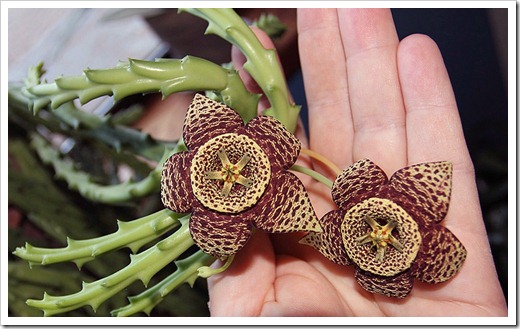 |
| Orbea variegata flowers |
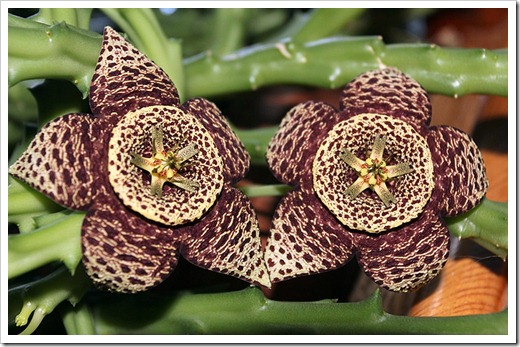 |
| Orbea variegata flowers |
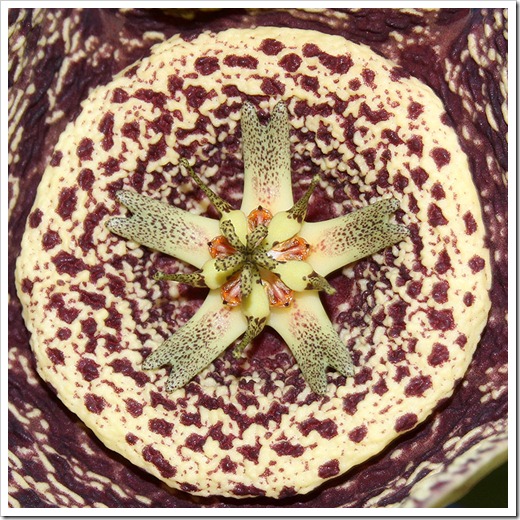 |
| Closeup of Orbea variegata flower |
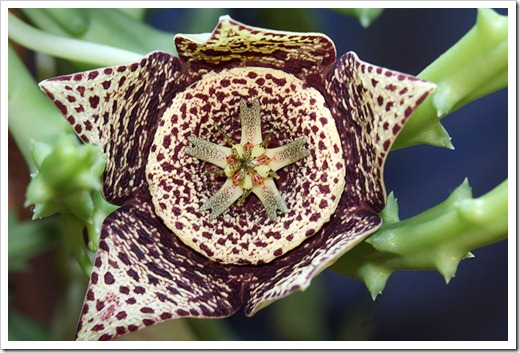 |
| Orbea variegata flower closing up after it’s done blooming |
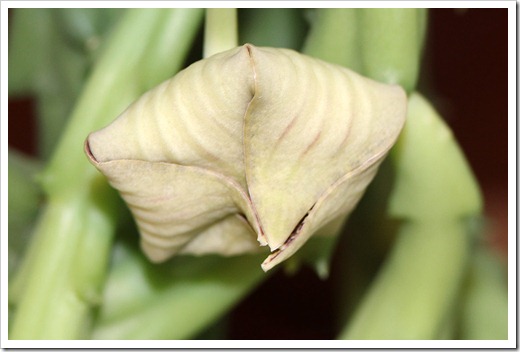 |
| Orbea variegata flower closed up completely after blooming |
There appears to be quite a bit of variation in the flowers. This form, for example, is creamier overall, with fewer spots and pointier lobes.
In Europe, Orbea variegata has been in cultivation since the 1700s as Stapelia gigantea. This illustration was published in Volume1 of The Botanical Magazine (1790).
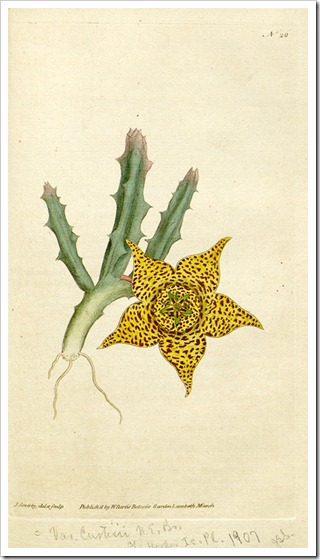 |
| Illustration of Orbea variegata (Stapelia gigantea) in Volume 1 of The Botanical Magazine, published in 1790 Photo source: Wikimedia Commons |
I love discovering new plants, and I’m happy that 2011 is ending on such a high.
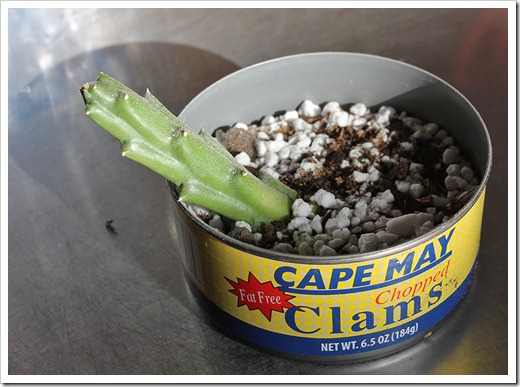 |
| One of my Orbea variegata cuttings, stuck in dry soil mix in a makeshift container (it was too cold to root around in my in-laws’ shed for a proper flower pot) |

Those flowers are really quite stunning, nice find. What a great mother-in-law you've got too!
ReplyDeleteWhen the flowers bloom they smell like a dead animal! Does yours?
ReplyDeleteYes, most definitely! Flies are attracted to the small--as are dogs, I've noticed :-).
Deletehow to grow orbea variegata from seeds
ReplyDelete